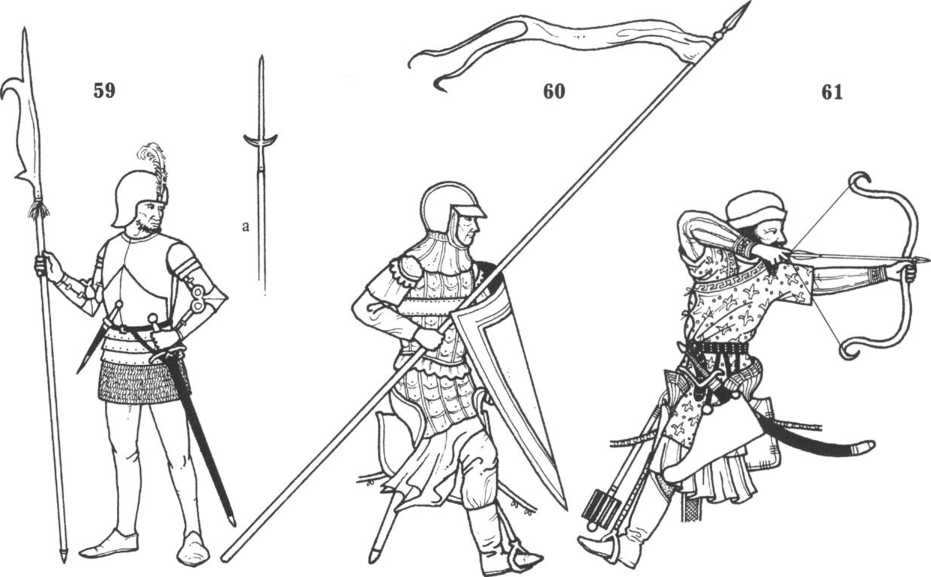The armour of this mid-15th century figure is typical of that likely to have been worn by at least the Genoese, Venetian and Cretan elements, and probably the Catalans too, of the ‘foreigners’ who fought in defence of Constantinople in 1453. We know, for instance, that 3-400 of Giustiniani’s men were ‘in full armour’ but, fighting on foot as they were, and from behind battlements, this probably meant that they wore armour only on their heads, torsos and arms, leaving their legs unarmoured as here; one source (Pseudo-Sphrantzes) actually reports that Giustiniani himself was wounded ‘on the right leg, near the foot’, though others say he was wounded in the hand (Doukas and Chalkokondyles) or upper arm (Pusculus) by a cannon shot, by an arrow in his exposed armpit (Leonard of Chios), or in the chest by a crossbow bolt or a handgun shot that pierced his breastplate (Kritovoulos and Tetaldi). Interestingly the composite picture we can build up of his armour, based on these wounds, tallies remarkably well with that depicted here. Leonard of Chios mentions elsewhere that ‘Giustiniani and his men, since they were fully armoured, sustained no injury from the arrows or other missiles’, and describes their equipment as ‘bright and gleaming’. That the Venetians at least were also armoured as depicted here is confirmed by Tetaldi, who tells us that some were captured while removing their armour to swim out to their ships after the city had fallen.
Various eye-witness accounts tell us that in 1453 they were armed with crossbows, spears and javelins, hand-weapons and, as we have already seen under figure 56, handguns. The weapon actually carried by the figure depicted is a bill, popular in 15th century Italy where it was called a ronco or roncone. (59a depicts a true roncone, or rawcon.) Oarsmen, who were usually only lightly armoured or else completely unarmoured (see figure 64 below and figure 80 in volume 1), were probably the throwers of the javelins mentioned by several of the chroniclers; certainly half the oarsmen aboard Florentine galleys in 1445 were armed with javelins (of which each man had a dozen), a practice which they had apparently copied from the Genoese. Others may have been archers and crossbowmen, such as the 200 guarding the Golden Gate under a certain ‘Manuel the Genoese’. The Cretans too were undoubtedly crossbowmen since the 300 in Negroponte on its fall to the Ottomans in 1470 were, as too were the 400 in Rhodes in 1522.

We know from Barbaro’s account of the siege that the Venetian elements at least were probably distinctively uniformed, though it is not clear in what way.




 World History
World History









